This weekend’s release of the new Downton Abbey film will bring fans back to the sweeping grounds and grand halls of England’s Highclere Castle. This stunning edifice serves as the real-life setting of the fictional Crawley home. And if walls could talk, Highclere Castle would tell a few compelling stories of its own—especially about its best-known occupants: George Herbert, 5th Earl of Carnarvon, and his wife, Almina.
Highclere Castle
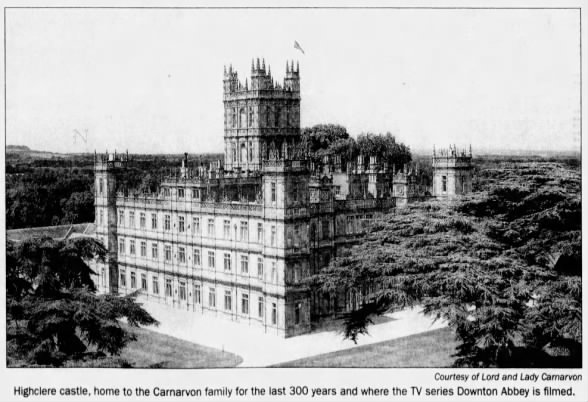
Highclere was almost entirely rebuilt in 1842-1849 on the bones of an older house, which in turn was built on the foundations of a medieval palace. The castle, on its 5,000 acres of beautiful park-like land, serves as the country seat of the Earl of Carnarvon. Here George Herbert, 5th Earl of Carnarvon was born. Perhaps his birth was accompanied by the Highclere tradition where 500 gallons of beer are brewed to remain unopened until the heir “attains his majority.” (The clipping below refers to the birth of George Herbert’s son, Henry Herbert.)
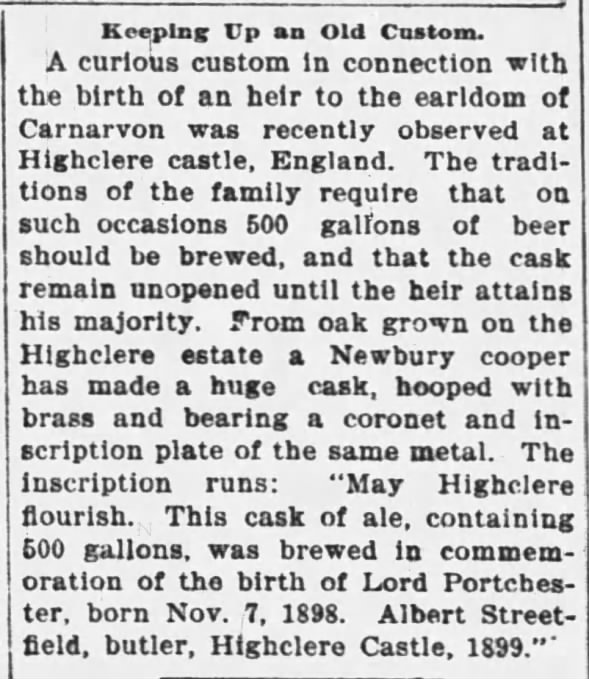
Almina Herbert, Countess of Carnarvon
Lord Carnarvon married Almina Wombwell—the illegitimate daughter of millionaire Alfred de Rothschild—on June 26, 1895. Her connections left her with plenty of wealth, which would play a significant role throughout her life. Downton Abbey watchers may recognize Cora Crawley—an heiress who marries into a titled family—is loosely based on Almina. And the similarities don’t end there.
At the start of World War I, just as in the show, Highclere Castle was converted into a hospital.
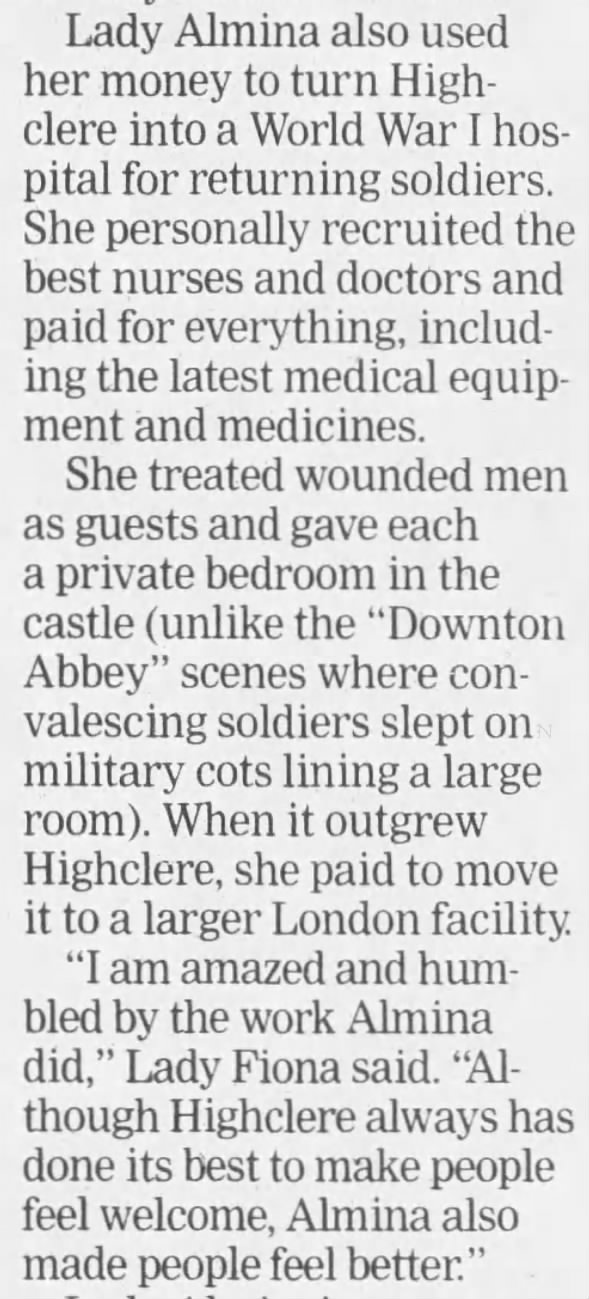
But later wealth came, as it so often does, with scandal. In the mid-1920s, shortly after her husband’s death, Lady Carnarvon married Colonel Dennistoun. Dennistoun’s ex-wife drew the wealthy Almina into a high-profile court case, demanding Dennistoun pay the alimony he owed her from their divorce. The case was splashed across papers for months, and every move Lady Carnarvon made was scrutinized (as seen by the clipping below). In the end, the jury ruled that no payment was required from the new couple.
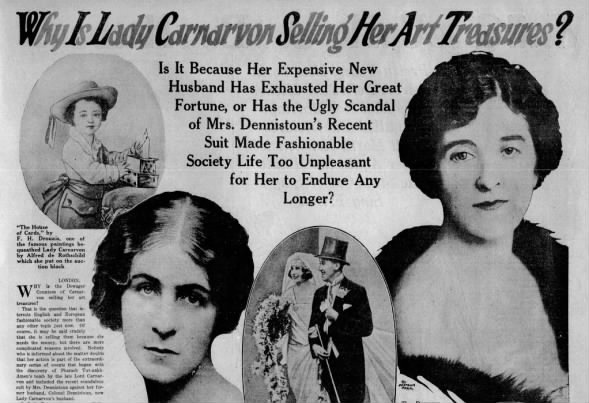
George Herbert, Earl of Carnarvon
The most sensational story in this history is that of Lord Carnarvon. He was an avid Egyptologist who—with the help of his wife—funded the expedition that would discover Tut’s Tomb. Lord Carnarvon traveled to Egypt in late 1922. He was one of the first in modern times to see it opened, and to enter within.
Five months later he was dead, the victim of a bad mosquito bite gone wrong. But with his recent visit to Tutankhamen’s tomb on everyone’s minds (and with a little help from a certain superstitious author), the idea of a mummy’s curse entered popular culture. And Lord Carnarvon was its unfortunate poster child.
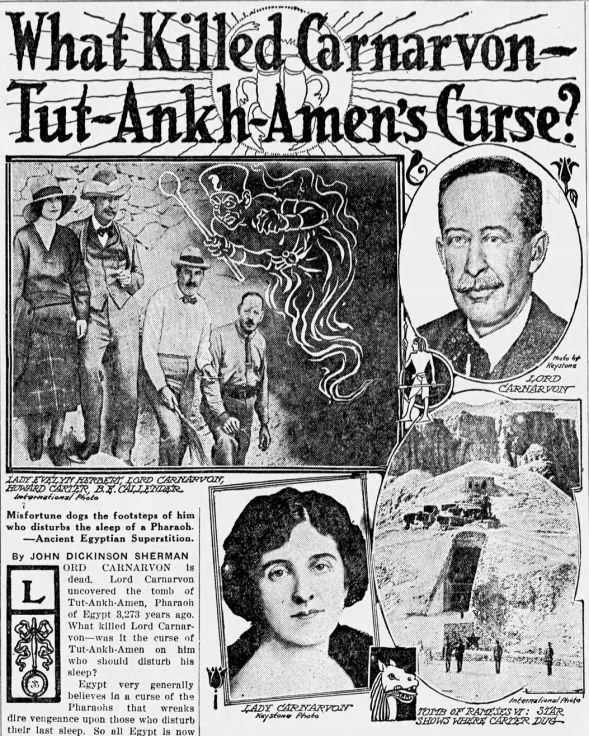
Lord Carnarvon himself may not be directly mirrored in any of the show’s characters, but his love of Egypt is. All of the fictional Lord Grantham’s four-legged companions have Egyptian names.
The history of Highclere Castle is, of course, much longer and more complicated than anything shared here. Perhaps the Downton Abbey film will provide further glimpses into the non-fictional past of its iconic castle backdrop and the real-life people who walked its halls.
Like this post? Try one of these:

